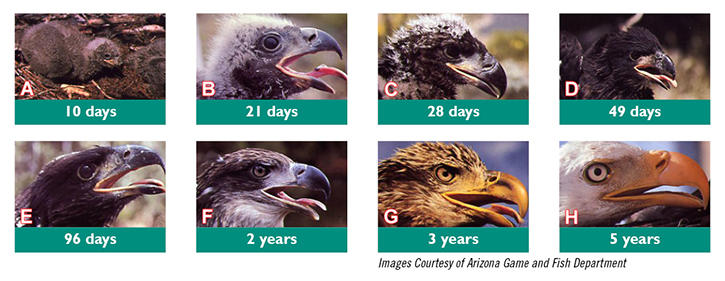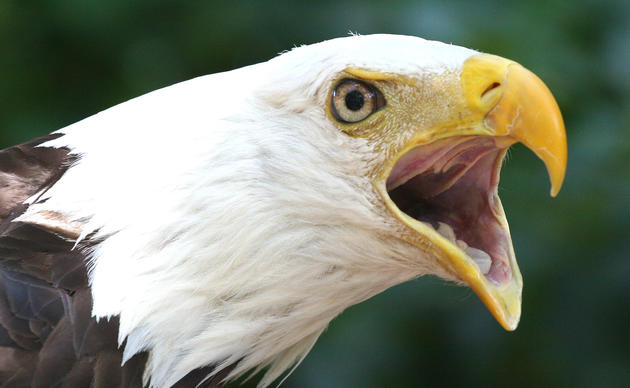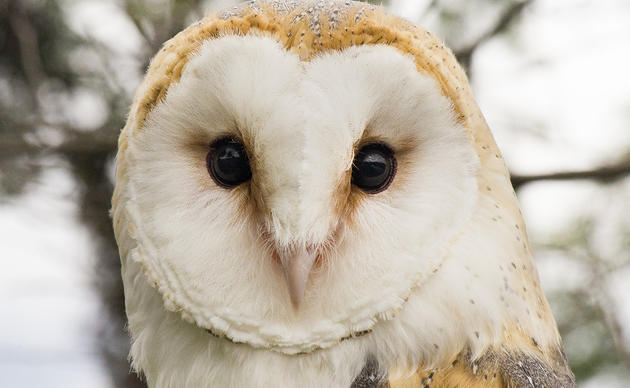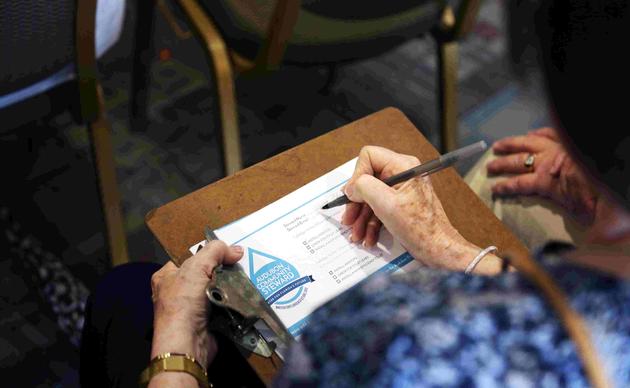Eaglet Biology
EAGLET NESTLING BEHAVIORS
The behavior patterns of the developing nestlings change almost as rapidly as their plumage. Because of eaglet size disparity, fratricide, or the act of killing one’s sibling, can occur during the first few weeks of life. Adult eagles do not interfere, but will continue to supply morsels of food to any interested nestling. The first month is critical in the survival of a weaker eaglet.
As feathers emerge, the nestlings begin wing-flapping and become preoccupied with preening activities, including stimulating the uropygial gland near the base of the tail for a fluid to weatherproof their new plumage. When nearly one month old, they grasp objects in their talons, peck at food, and regurgitate pellets of undigested casting material. At six to seven weeks old, eaglets stand upright, scream loudly for food, take “hop flights” hovering above the nest and play games. Lone eaglets occasionally exhibit play behavior, pouncing on items in the nest, or even tugging the adult’s feathers. Multiple chick nests provide observers with entertainment as the eaglets steal food from each other, play tug-of-war, chase each other around the nest and engage in other youthful antics.
Feedings increase in frequency and amount over time as the eaglets require enormous energy to grow at such an accelerated rate. Slumber often follows a meal, with the eaglets either dozing upright in the nest or laying down. Exercise is vital to developing the strong wing and leg muscles necessary for flight and capturing prey.
EAGLET DEFENSIVE BEHAVIOR
Eaglets will often stand side by side in the nest and observe the daily activities around their nest site. This is an important behavior, imprinting them to the natal territory for future nesting purposes. If approached in the nest when less than one month old, eaglets can respond by making food begging vocalizations and postures. Reaction of older nestlings is various, ranging from throwing their heads back and vocalizing, spreading their wings, and hissing open-mouthed with talons extended (i.e. the fighting stance display), running across the nest or jumping out, or the stoop-shoulder, head-down display. Some have also been seen laying flat in the nest “playing dead”.
FLEDGING
A pre-fledge milestone is an activity called branching when the eaglet takes short hops/flights to branches within the nest tree. The young eagles normally branch for up to 7-10 days before fledge, exercising theirs wings and legs, taking short flights to branches in the nest tree. At ten-to-twelve weeks of age, the eaglet is physically ready to fly. Most eaglets fledge around 12 weeks. The timing of actual fledging can be influenced by human activity or disturbance around the nest, causing a premature fledge. This can result in injury or even death of the eaglet. Premature fledglings that fall to the ground can be successfully raised there for a short period by the parents, although predators and humans can pose threats to survival. This developmental stage of newly flighted eaglets can be a most perilous time.
From twelve-sixteen weeks, the young eagles hone flight and landing skills, and experience hunting and foraging on their own for the first time. Juveniles have poor skills at this early stage, so they depend on their parents for food. Most eaglets will still return to the nest tree for food deliveries and rest, although they spend the day flying and hunting throughout the adults’ home range. Adult eagles will continue to provide food to their young at this age, as they encourage them to become self-reliant. The young eagles may scavenge roadkill on their own since hunting proficiency takes several months.
When the juvenile eagles are seventeen to twenty-three weeks old, they are self-sufficient and wander away from the nesting territory. Florida juveniles tend to migrate northward after the nesting cycle is completed, although some family groups remain together over the summer months and other young eagles join congregations of juvenile/subadult birds around large lakes or landfills.
PLUMAGE SEQUENCE
The young eaglet experiences several different plumage phases before leaving the nest: primary down, secondary down, transitional and juvenile. As hatchlings, eaglets are in the primary or natal down phase and are fluffy grey in color with a whitish head and throat. By their third week, the secondary down appears and is a longer, thicker, dark-grey wool covering. During the transitional stage at age four to six weeks, the eaglet has its first dark brown-to-black “pin” feathers emerging on the back, shoulders, breast and wings. The juvenile eaglet is fully feathered by 10 weeks of age and exercises its wings by jumping up and down in the nest.

How you can help, right now
Support the Audubon Center for Birds of Prey
Your donation helps to protect America's birds, wildlife, and habitats. Donate critical funding needed to support our important rehabilitation and education work.
Subscribe to Raptor News
Sign up for our monthly newsletter and stay up to date with what's happening at the Audubon Center for Birds of Prey.
Become a Water Steward
Engage the public in water and energy conservation using simple steps to save water inside the home, outside the home and in your community.




